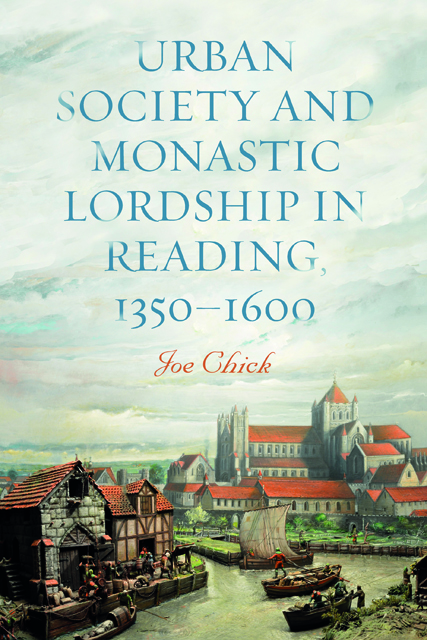Book contents
- Frontmatter
- Dedication
- Contents
- List of Illustrations
- Acknowledgements
- Abbreviations
- Notes on the Text
- Introduction
- 1 Setting and Society
- 2 Political Life
- 3 Economic Life
- 4 Religious Life
- Conclusions and Outlook
- A Social Network Analysis Datasets and Forms of Analysis
- B Trades Categorised by Status
- C Trades Categorised by Sector
- Timeline
- Bibliography
- Index
2 - Political Life
Published online by Cambridge University Press: 17 December 2022
- Frontmatter
- Dedication
- Contents
- List of Illustrations
- Acknowledgements
- Abbreviations
- Notes on the Text
- Introduction
- 1 Setting and Society
- 2 Political Life
- 3 Economic Life
- 4 Religious Life
- Conclusions and Outlook
- A Social Network Analysis Datasets and Forms of Analysis
- B Trades Categorised by Status
- C Trades Categorised by Sector
- Timeline
- Bibliography
- Index
Summary
For monastic towns, it can be tempting to view the years 1350–1600 as composed of two distinct periods, divided by the Dissolution. Indeed, much existing scholarship depicts the Dissolution as either a revolution or a crisis, with Robert Tittler arguing the former and the Reading historians Jeanette Martin and Christine Jackson the latter. The descriptors of ‘revolution’ and ‘crisis’ both imply a relatively static situation across the medieval period that was overturned in a single event. The removal of Reading Abbey as lord did revolutionise the town’s politics, but there were other significant political developments both before and after the abbey’s demise. Splitting the years by the Dissolution inherently detracts from these.
This chapter identifies six distinct stages in Reading’s political evolution, with a section dedicated to each. Firstly, the period up to 1430, characterised by a political system into which the merchant guild was integrated in a subordinated capacity. Secondly, the years 1430–c.1470, in which a clearer distinction emerged between town and abbey officials. Thirdly, a period of transformation in c.1470–1510, which was accompanied by a protracted town–abbey dispute. Fourthly, the settled relations of 1510–39 that can easily be overlooked in light of what followed. Fifthly, the years 1539–60 in which the guild strove to capitalise on the opportunities of the Dissolution but also faced challenges in adjusting to the new political climate. Sixthly, the period 1560–1600 in which the new self-governing political framework took shape.
Abbey, Guild, and Commonalty in Local Government, 1350–1430
Reading’s merchant guild played a role in the administration of the town throughout the period of study but, in the early decades, it was firmly subordinated to abbatial authority. Although non-violent in their form, some town–abbey disputes occurred at this time, centred on a number of specific grievances: firstly, the abbot’s right to impose taxes with a protest over a tallage in 1359 and, secondly, the recurring theme of the abbey’s neglect of its responsibilities in the town. In 1376 there were complaints regarding the abbey’s almsgiving duties and its appointment of chaplains, with the issue of failing to appoint a chaplain arising again in 1413. Thirdly, the appointment of constables. The right of selection seems to have originally been in the abbot’s hands, but in 1351 the burgesses refused to recognise the appointed constable.
- Type
- Chapter
- Information
- Urban Society and Monastic Lordship in Reading, 1350-1600 , pp. 57 - 102Publisher: Boydell & BrewerPrint publication year: 2022

